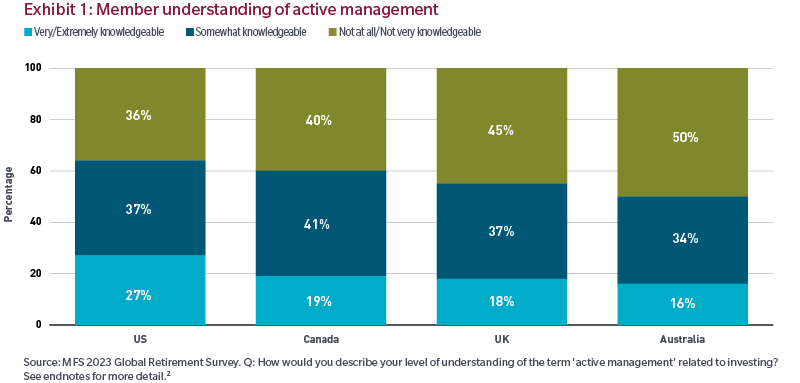Over a 30-year time horizon, we estimate Member X will accumulate roughly $327,000 if returns meet the forward-looking assumption per year. In this example, an additional 1% of net excess return (i.e. a 7.1% average return over the period) results in a balance of approximately $388,000, a 19% increase in the account balance, a meaningful amount when considering a broad range of potential retirement outcomes.
Given the shorter time horizon until retirement for Member Y, we used a 10-year return assumption with an estimated 5% expected return for the 60/40 portfolio. Member Y's account is estimated to grow from the starting balance of $250,000 at age 55 to about $498,000 at age 65 if returns are 5% per year. An additional 1% of net excess return (i.e. a 6% return over the period) results in a balance of $543,000, which is 9% higher than our initial calculation.
Reality #2: While beta exposure alone may have supported members' retirement savings goals in the past, our Long-Term Capital Market Expectations suggests excess returns could be critical to helping keep members on track to achieve their retirement savings goals in the future.
Misconception #3: Sustainable investing is not aligned with fiduciary responsibility
Sustainable, or ESG (environmental, social and governance), investing is an important topic for DC plan fiduciaries. However, its prevalence and how it is implemented can vary significantly by country. Plan sponsors in Canada and the United States are generally in the early stages of incorporating sustainable investments into the plan menu, while sustainable investing is more mature and prevalent in the United Kingdom and Australia. Regulatory regimes in each country have been key drivers in supporting or discouraging the incorporation of sustainable investments in DC plans.
Despite varying regulations across the world, one voice that is consistently supportive of sustainable investing is that of the member. Survey results revealed 77% of Canadian plan members describe themselves as interested in seeing more ESG investments offered in their employer-sponsored retirement plans.









